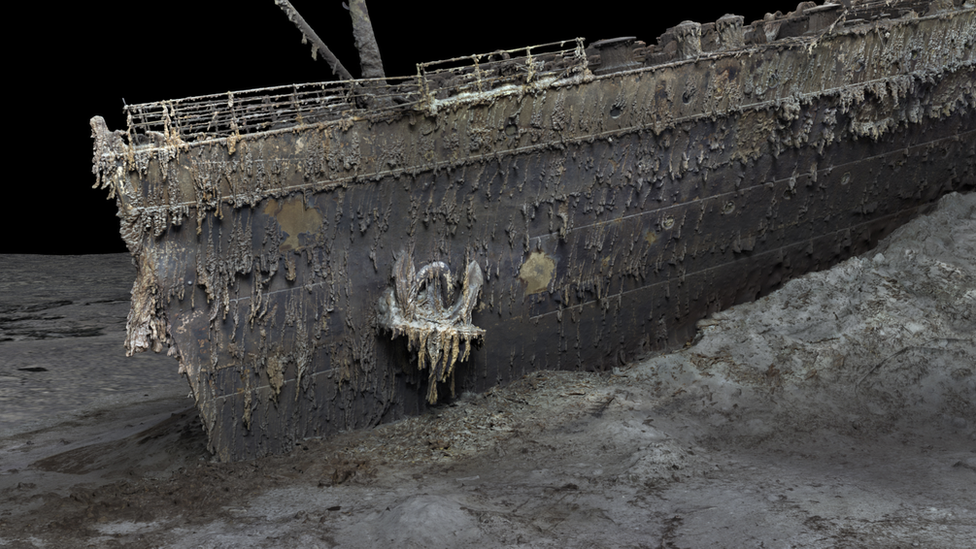The search for the missing Titanic sub in maps and graphics
- Published
Underwater robot vehicles have been scouring the ocean floor to find a tourist submersible carrying five people that went missing during a dive to the wreck of the Titanic.
The sub has been missing for four days in the vast depths of the Atlantic Ocean, but how have rescue teams been carrying out the search?
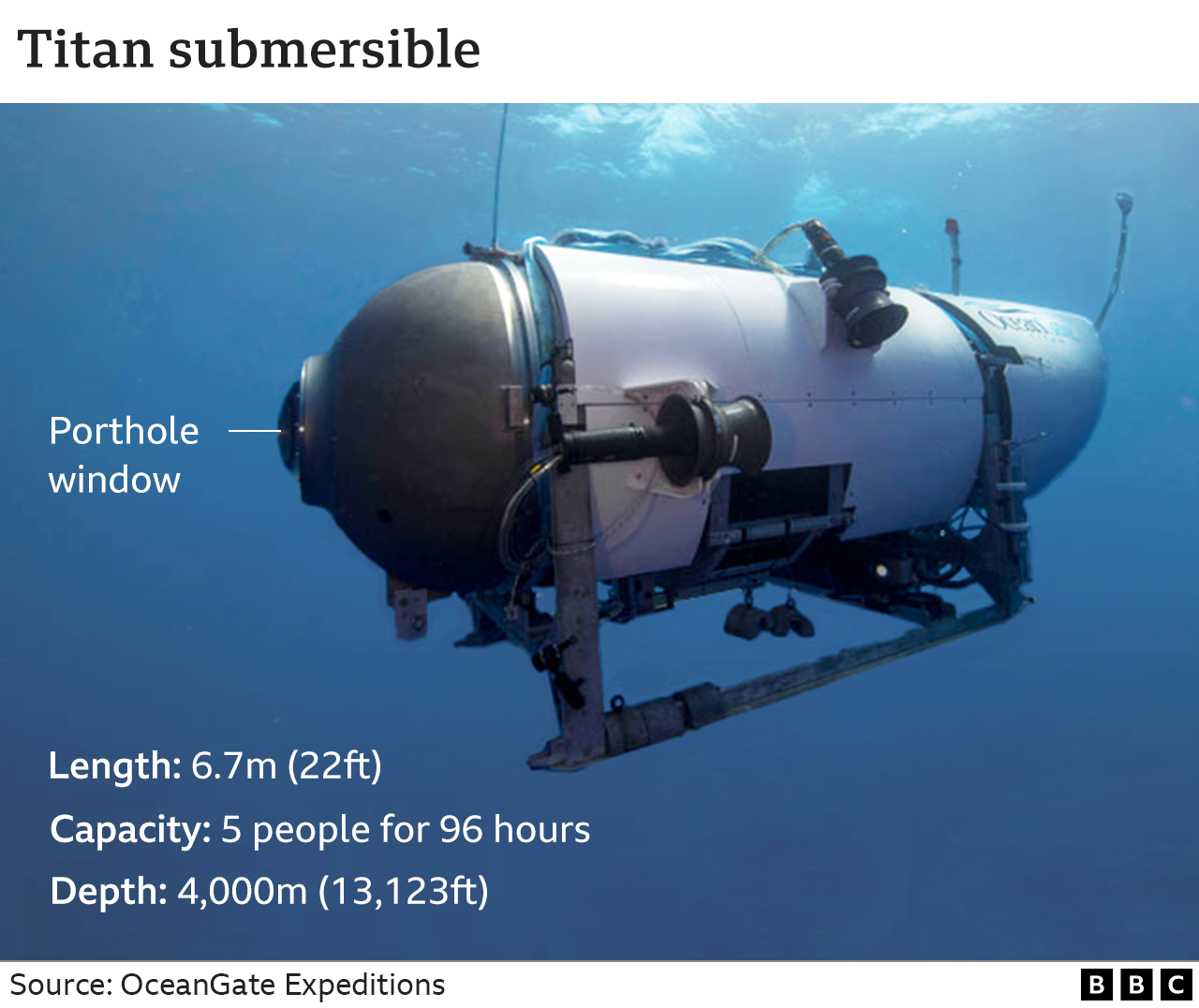
The crew of the Titan submersible lost contact with its surface vessel - the Polar Prince - an hour and 45 minutes after it began a dive to see the wreck on Sunday.
The Titanic wreck lies some 435 miles (700km) south of St John's, Newfoundland, and about a dozen ships have been in the area to help the rescue mission, which has been run from Boston, Massachusetts.
Some of the ships involved in the search are carrying unmanned remotely operated vehicles (ROVs), which can get deep enough to reach the Titanic wreck lying 3,800m (12,500ft) beneath the surface.
Shortly before 17:00 BST on Thursday the US Coast Guard said that a debris field had been found by the Horizon Arctic's remotely operated vehicle.
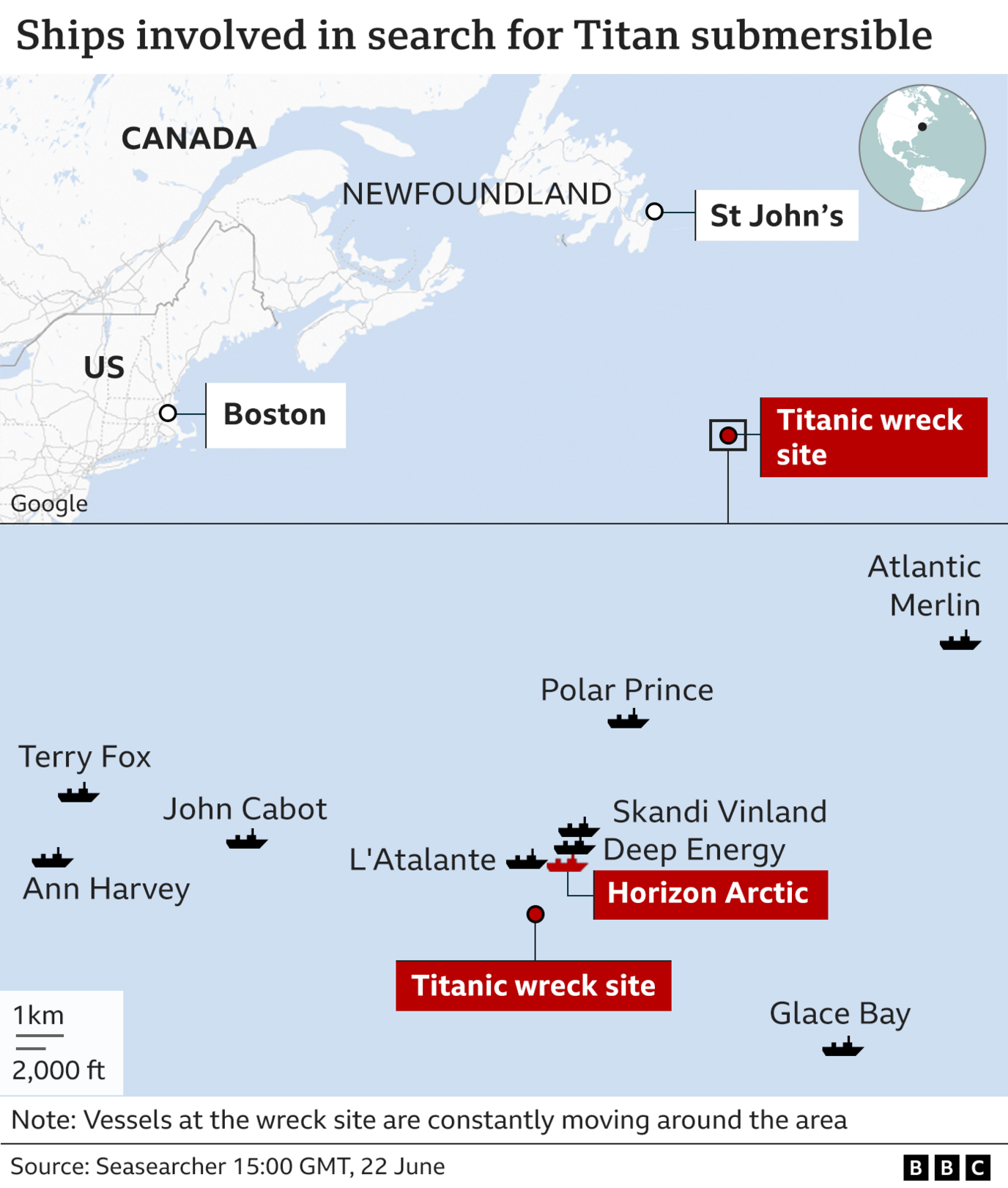
The Horizon Arctic, which arrived at the scene on Wednesday night, was carrying an Odysseus 6k ROV.
The Odysseus 6k has lights and cameras on board that enable the team on the surface ship to see in real time what is on the floor of the ocean and two mechanical arms capable of extremely delicate manoeuvres.

Another ship that arrived overnight, French research vessel L'Atalante, was carrying a Victor 6000 ROV which, like the Odysseus 6k ROV, can reach depths of 6,000m and can also be used to recover items from the bottom of the ocean.
Where has the search been focused?
The Polar Prince and seven ships have been searching an area of more than 25,000 sq km, with military planes and sonar buoys also being used.
The US Coast Guard released a graphic on Thursday morning showing how it has been conducting the search with ships and planes taking zigzagging routes over the site of the Titanic shipwreck and another area nearby.

Vessels involved in Titan search operation

Polar Prince - Research vessel that launched the Titan submersible
Deep Energy - Commercial pipe-laying ship with two ROVs that can operate down to 3,000m (10,000ft)
Atlantic Merlin - Canadian offshore supply vessel with 4,000m winch system. Carries ROVs but it's unknown how deep they can operate
Skandi Vinland - Subsea support vessel with two ROVs but it's unknown how deep they can operate
L'Atalante - French-operated ship heading to the scene with an ROV that can operate at depth of Titanic wreckage
Horizon Arctic - Commercial vessel loaded with support equipment and an ROV that can operate at depth of Titanic wreckage
Glace Bay - Canadian naval ship carrying decompression chamber and ready to provide medical assistance
John Cabot - Scientific research vessel with sonar search capabilities operated by the Canadian Coast Guard
Ann Harvey - Light icebreaker vessel operated by the Canadian Coast Guard
Terry Fox - Heavy icebreaker vessel operated by the Canadian Coast Guard
Searching the deep ocean
Rescuers have also been exploring depths reaching more than 4km (2.5 miles) for the 6.7m (22ft) long submersible - because radio and GPS signals can't travel through water.
Canadian P-3 Aurora aircraft have been conducting sonar searches and sonar buoys were also deployed in the area.
Sonar buoys, or sonobuoys, detect and identify objects moving in the water - and are often used in the hunt for enemy submarines.
They either listen for sounds produced by propellers and machinery (passive detection) - which could also include the crew making noise against the hull of the sub - or by bouncing a sonar "ping" off the surface of the vessel (active detection) and listening for the returning echo.
The more buoys that pick up the signal the more accurately they can work out the location of the source - by timing how long the signal takes to reach each buoy and then working out how far away each is.

Ocean recovery expert David Mearns says that if an ROV can locate the Titan then it should be able to recover it. "A world-class ROV with twin manipulators can actually grab hold of [the Titan] or attach a lift line to it and slowly haul it to the surface," he adds.

The US has previously used ROVs and a US Navy Flyaway Deep Ocean Salvage System - a special winch system designed to provide reliable deep ocean lifting capacity for the recovery of large and heavy undersea objects - in salvage operations at the depth of the Titanic, including to locate and recover a crashed fighter jet from a depth of 3,780m (12,400 feet) in the South China Sea last year.
In that case, the US military used the ROV to attach rigging around the aircraft and connect it to a lifting hook that was lowered from a crane on the rescue vessel on the surface.
Related topics
- Published20 June 2023
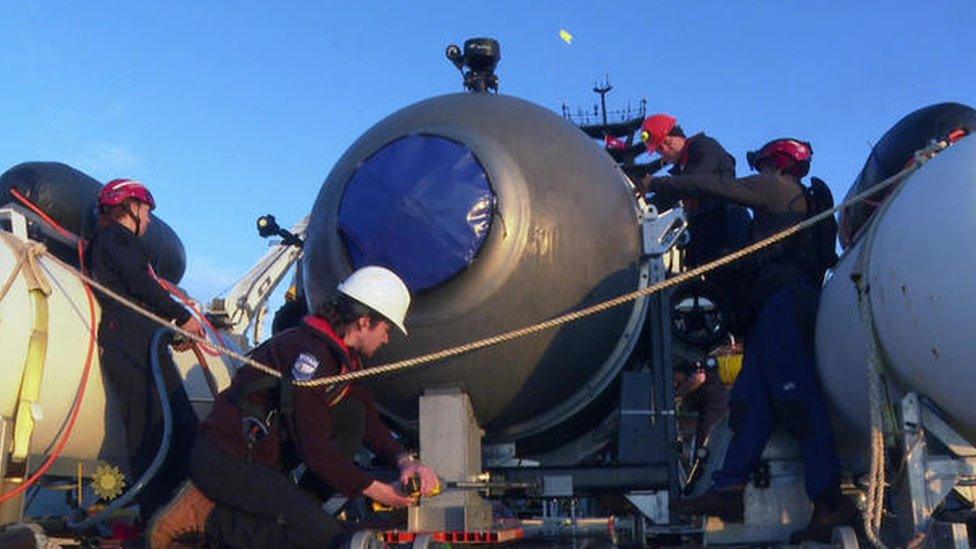
- Published26 June 2023
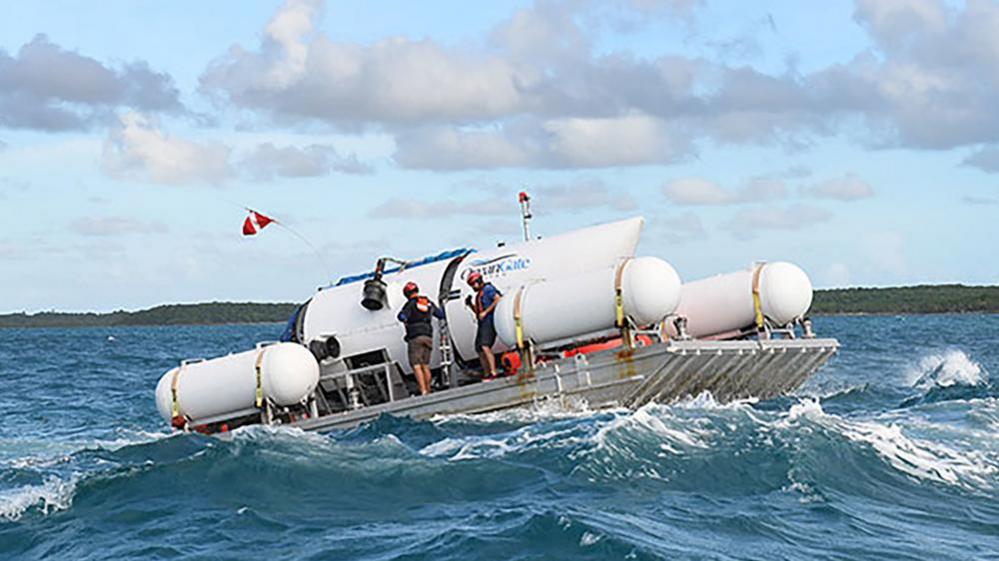
- Published23 June 2023

- Published17 May 2023
